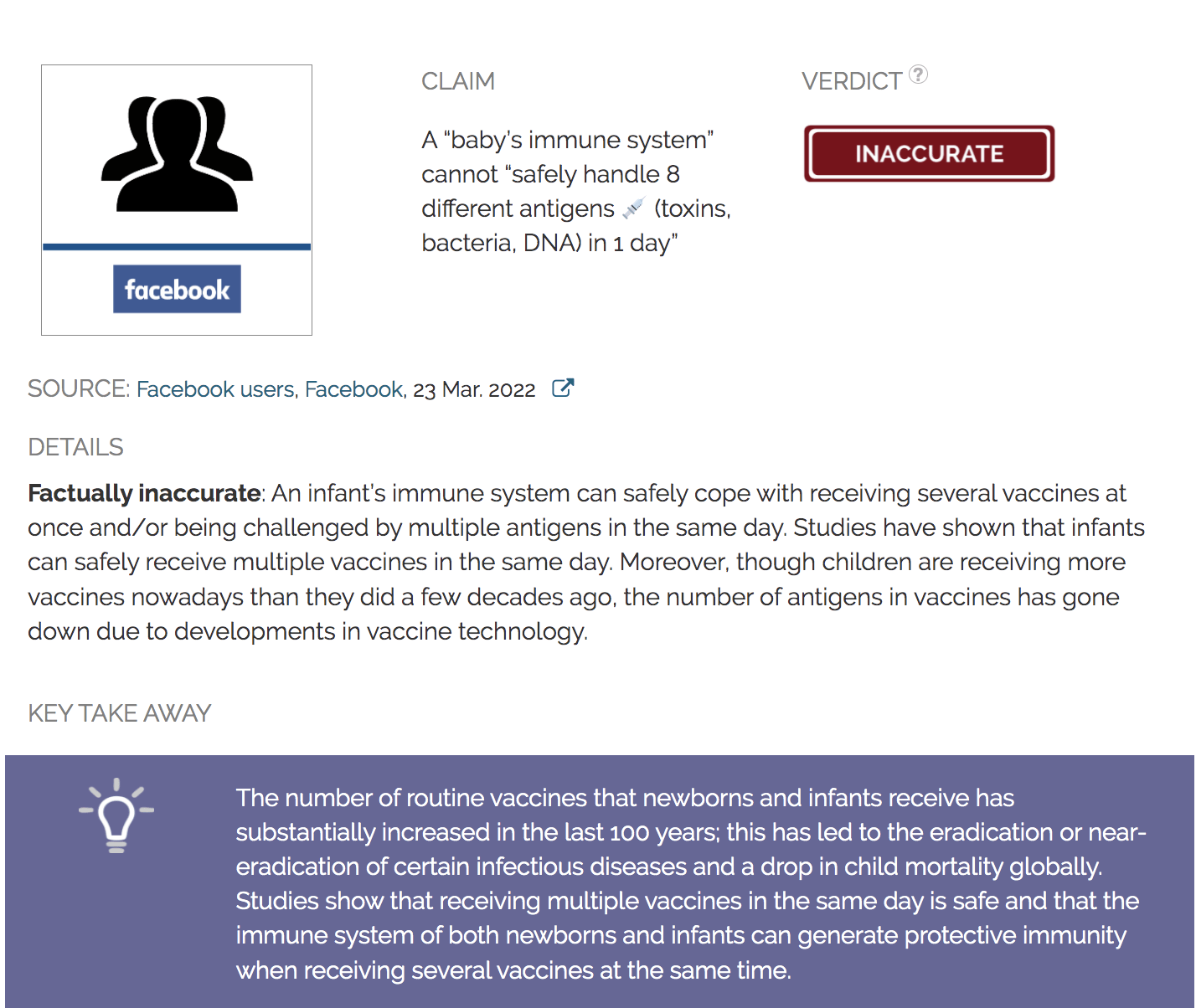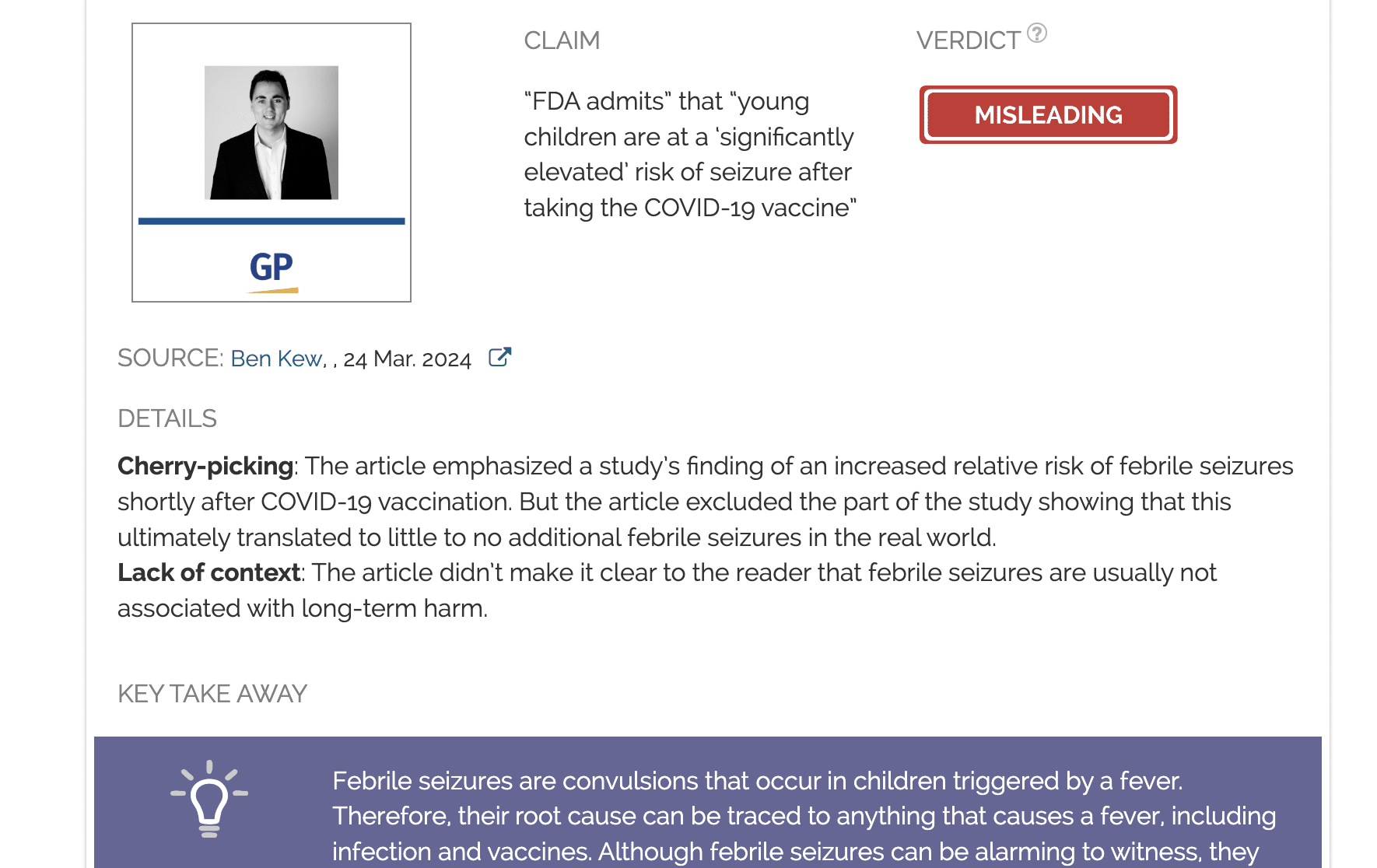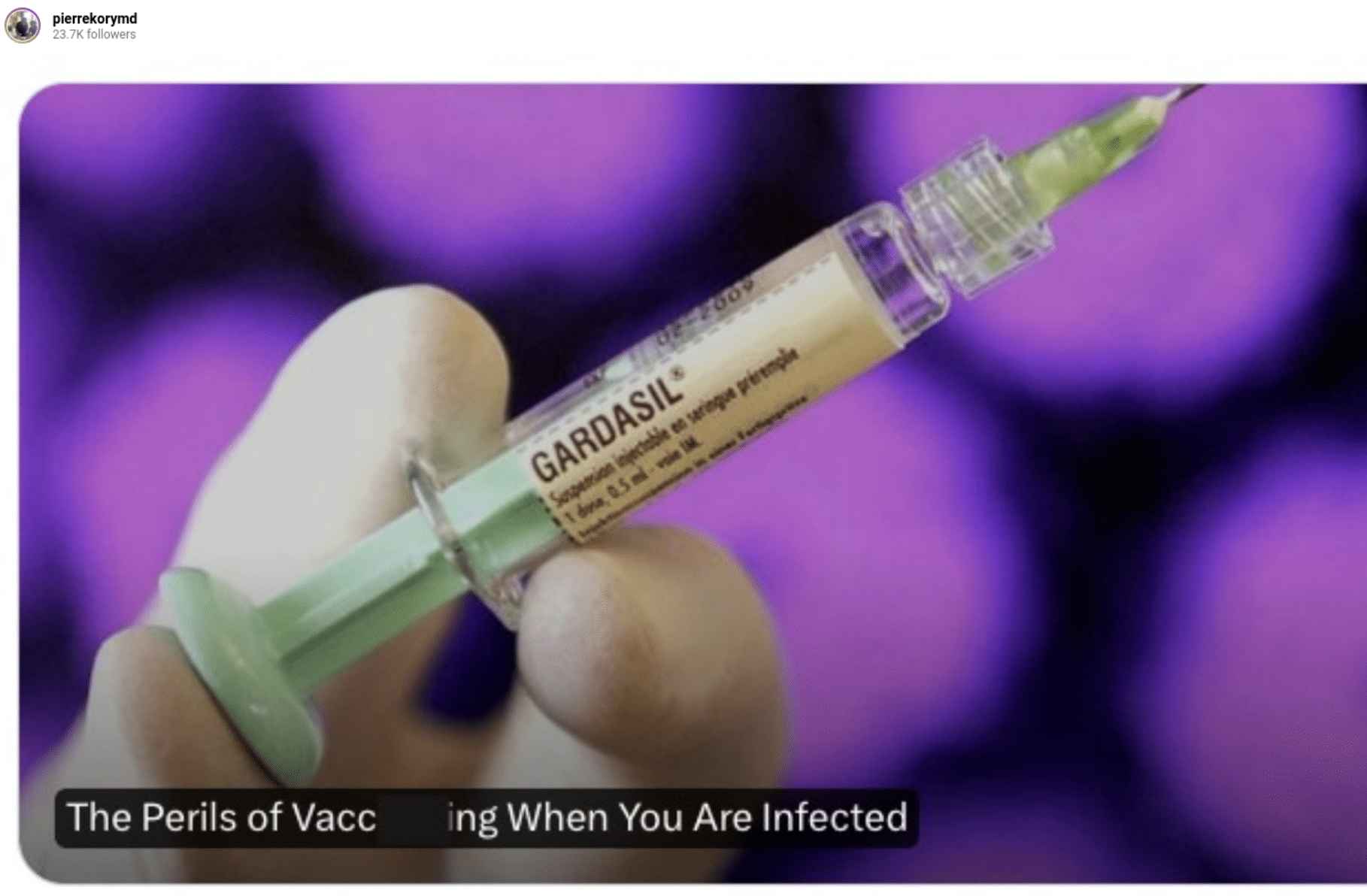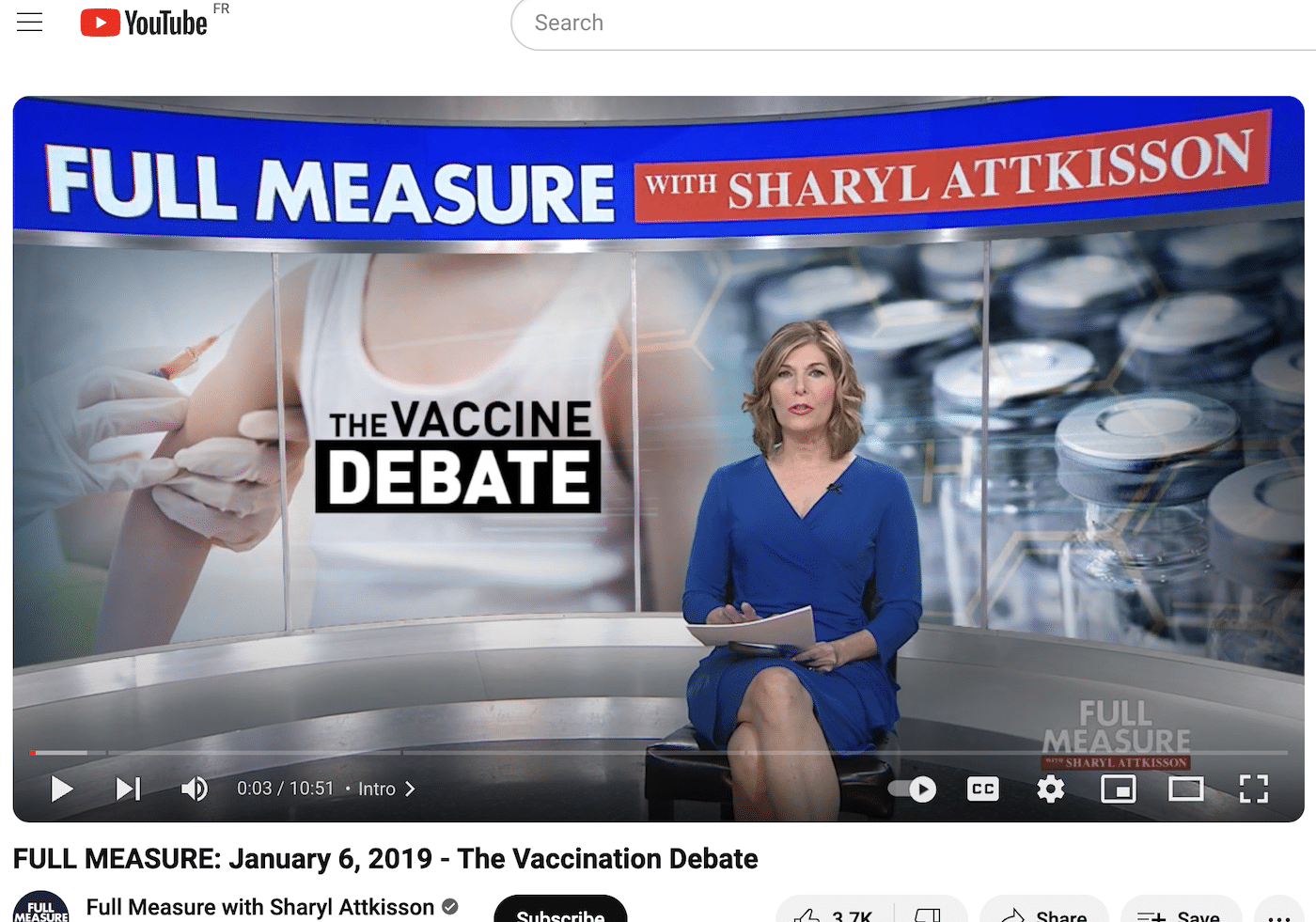- Health
Infants’ immune systems are perfectly able to safely cope with several vaccines in one day
Key takeaway
The number of routine vaccines that newborns and infants receive has substantially increased in the last 100 years; this has led to the eradication or near-eradication of certain infectious diseases and a drop in child mortality globally. Studies show that receiving multiple vaccines in the same day is safe and that the immune system of both newborns and infants can generate protective immunity when receiving several vaccines at the same time.
Reviewed content

Verdict:
Claim:
A “baby’s immune system” cannot “safely handle 8 different antigens 💉 (toxins, bacteria, DNA) in 1 day”
Verdict detail
Factually inaccurate: An infant’s immune system can safely cope with receiving several vaccines at once and/or being challenged by multiple antigens in the same day. Studies have shown that infants can safely receive multiple vaccines in the same day. Moreover, though children are receiving more vaccines nowadays than they did a few decades ago, the number of antigens in vaccines has gone down due to developments in vaccine technology.
Full Claim
“If you think a baby’s immune system can safely handle 8 different antigens 💉 (toxins, bacteria, DNA) in 1 day but when introducing food they should be fed 1 by 1 to catch an allergic reaction, you might be brainwashed”.
Review
In the last century, infants in the U.S. went from receiving one routine vaccine protecting against a single disease (smallpox) to receiving as many as 26 inoculations that protect against 14 different diseases. In their first year of life, infants in the U.S. receive vaccines that protect them against hepatitis B, rotavirus, diphtheria, tetanus, pertussis, and polio, among other diseases.
During the 20th century and the beginning of the 21st century, the expansion of available vaccines led to the prevention of a number of diseases: smallpox was eradicated, and of the three wild poliovirus strains, two were eradicated and one remains in only two countries. It also decreased child mortality in the U.S. and globally[1]. Every year vaccines continue to prevent between two to three million deaths.
Despite the incredible public health improvements achieved through vaccines, some, including certain political leaders, have claimed that infants are now receiving too many vaccines. A Facebook post from 23 March 2022 claimed that “If you think a baby’s immune system can safely handle 8 different antigens 💉 (toxins, bacteria, DNA) in 1 day but when introducing food they should be fed 1 by 1 to catch an allergic reaction, you might be brainwashed.” The reference to vaccines is made clear with the use of the needle emoji.
Antigens are any substance that triggers the immune system to produce antibodies against it. The components in vaccines–which can be proteins, weakened or killed versions of the microbe–are antigens that trigger the immune system to develop a protective immune response against a number of diseases. Allergic reactions are caused when normally innocuous antigens, such as proteins in pollen or in peanuts, trigger the immune system to produce an allergic response[2]
The post compared the antigens infants are exposed to during routine vaccinations to the process of introducing solid foods to infants, which introduces other antigens; experts recommend introducing foods one at a time so that, if an allergic reaction to a food antigen occurs, it’s easier to pinpoint which food is the culprit. But the meme misleadingly suggested that feeding babies one type of food at a time had to do with safety, which is incorrect.
Within 24 hours, this post had accumulated over 1,500 likes and 500 shares on Facebook. As we’ll show below, receiving multiple vaccine doses during a single doctor’s visit doesn’t overwhelm an infant’s immune system.
Infants are fully capable of generating immune responses to vaccines and safely receiving multiple vaccines in one day
When newborns are born, they leave the uterus, an environment that is relatively sterile, and are immediately exposed to a myriad of new microbes, which also means being exposed to a myriad of new antigens. The process of birth itself, as well as breastfeeding and the environment, all expose the newborn to a massive amount of new microbes[3].
At birth, newborns already are capable of generating immune responses to pathogens, which is important considering the massive exposure that happens immediately after birth[4]. This also means that both newborns and infants are capable of generating an immune response to vaccines; newborns who receive the hepatitis B and/or the tuberculosis BCG vaccine (not widely used in the U.S.), for instance, generate protective immune responses. As for infants, according to a review by the director of the Vaccine Education Center at the Children’s Hospital of Philadelphia Paul Offit and colleagues:
“Approximately 90% of infants develop active protective immune responses to the primary series of diphtheria-tetanus-acellular-pertussis, hepatitis B, pneumococcus, Hib, and inactivated polio vaccines given between 2 months and 6 months of age.”[4]
A common claim is that receiving too many vaccines at the same time will “overwhelm” an infant’s immune system. The Facebook post claimed that a person would have to be brainwashed to think that “a baby’s immune system can safely handle 8 different antigens (toxins, bacteria, DNA) in 1 day”. However, according to Offit and colleagues, studies suggest that the immune system can comfortably respond to an extremely large number of antigens. They predicted “that if 11 vaccines were given to infants at one time, then about 0.1% of the immune system would be ‘used up’”[4]. Additionally, the immune system is constantly replenished, so no vaccine can “use up” the immune system.
Moreover, though the number of vaccines given to infants has gone up, the number of antigens in vaccines has actually gone down. In the 1960s, there were 3,217 antigens (specifically proteins) in vaccines that protected against smallpox, diphtheria, tetanus, pertussis, and polio. By 2000, the number was down to between 123 and 126 antigens, which protected against diphtheria, tetanus, pertussis, polio, measles, mumps, rubella, Haemophilus B, varicella, pneumococcus and hepatitis B[4]. In short, due to advances in vaccine technology, infants today get more bang (immune protection for more diseases) for their buck (lower antigen exposure).
Lastly, studies have shown that when infants receive multiple vaccines in the same day, they generate similar immune responses compared to infants who received them at different times[4]. There is also no evidence that multiple vaccines weaken the immune system, leaving children more susceptible to other infections. A study published in 2018 that followed 944 children in 6 U.S. health centers found no difference in the number of vaccines between children who were hospitalized for infectious diseases not targeted by vaccination and those with zero visits[5].
Conclusion
As shown above, the immune systems of both newborns and infants are more than capable of receiving multiple vaccines in one day without overwhelming their immune system. Moreover, due to advances in vaccine technology, the number of antigens in vaccines has actually gone down between the 1960s and the 2000s, even though infants nowadays are receiving more vaccines and being protected from more diseases than they did in the past. Childhood vaccines are a vital arm of public health, and decreased rates of vaccination among children will increase the number of outbreaks of vaccine-preventable diseases.
References
- 1 – National Immunization Program, CDC (1999) Achievements in Public Health, 1900-1999 Impact of Vaccines Universally Recommended for Children — United States, 1990-1998. Mortality and Morbidity Weekly Report.
- 2 – Zhang & Tao (2015) Antigenicity, Immunogenicity, Allergenicity. In Tao & Raz (editors) Allergy Bioinformatics
- 3 – Mueller et al. (2015) The infant microbiome development: mom matters. Trends in Molecular Medicine.
- 4 – Offit et al. (2002) Addressing parent’s concerns: Do multiple vaccines overwhelm or weaken the infant’s immune system? Pediatrics.
- 5 – Glanz et al. (2018) Association between estimated cumulative vaccine antigen exposure through the first 23 months of life and non-vaccine targeted infections from 24 through 47 months of age. JAMA.



